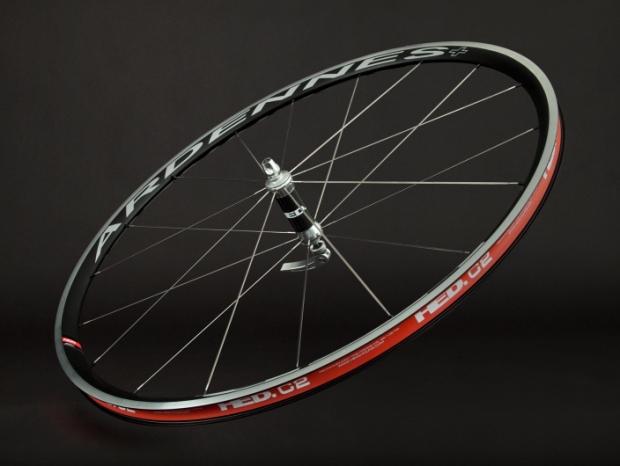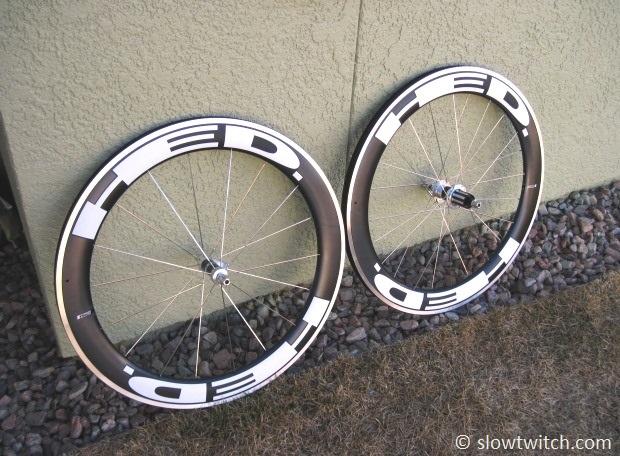A tour of the Hed Cycling base
Hed Cycling is known for their wheels, but also makes aerobars, road bars, stems, accessories, and even a few new goodies for 2014. We visited their Minnesota headquarters and factory to see how the magic happens and find out what the tagline ‘True Speed’ really means.
Hed has two buildings in a small neighborhood in Shoreview, Minnesota. It was quiet and calm when I showed up on an autumn day in October, 2013:
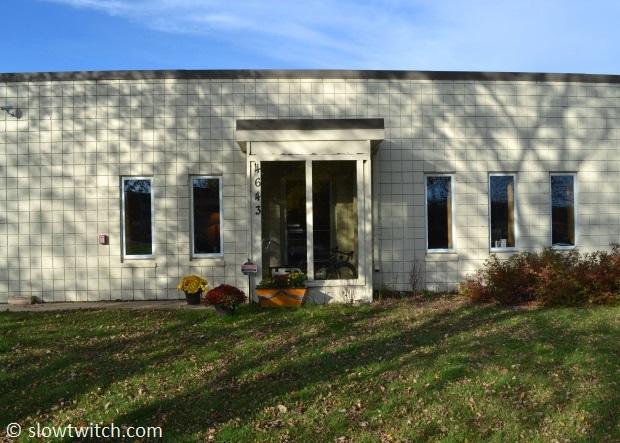
Around the back, you’ll find the coolest race support vehicle in the US – the Hed Cyclocross Bus:
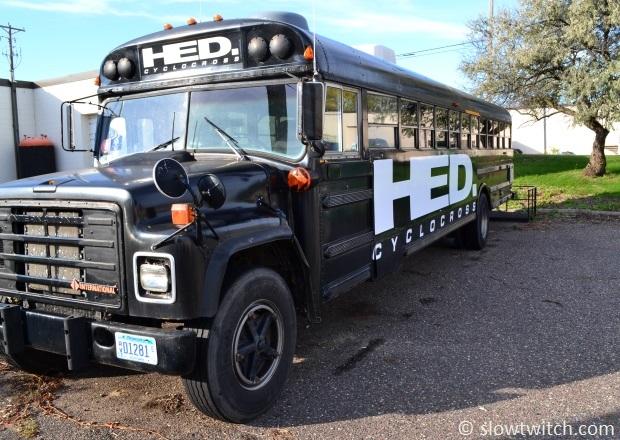
What actually takes place in each building? The main building contains offices, sales, wheel assembly, warranty, shipping, wheel decaling, QC, and small parts inventory. The second building houses engineering, warehousing, carbon cutting, aluminum rim rolling, R&D, decal printing, and the molding of all Stinger rims, Jet carbon skins, and disc wheel skins.
Which Hed parts are made overseas? Spokes are sourced from Belgium (Sapim), hubs, handlebars, and Ardennes rims come from Taiwan, and the H3s are molded in Hed’s Spain facility. H3 truing and finishing takes place at the Minnesota factory.
If you’re lucky, your wheel might have been made by Black Beauty here:
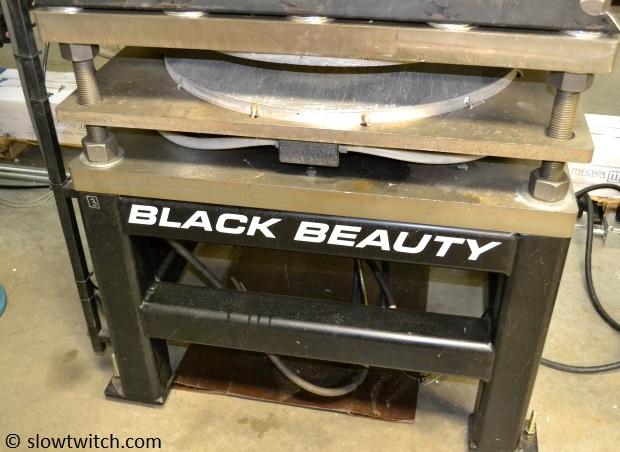
This computer controlled machine is being set up to cut out carbon segments for a rim.
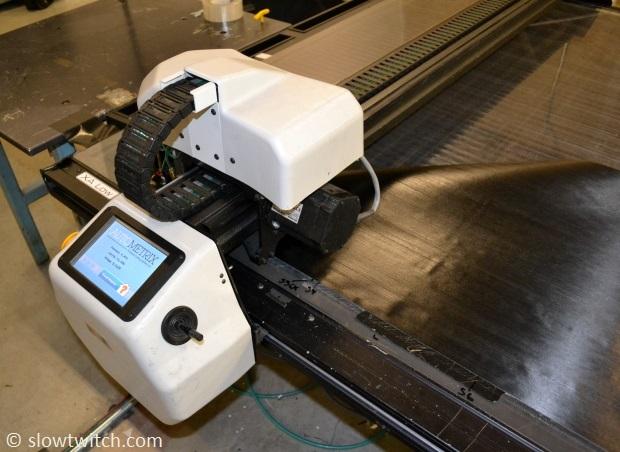
Hed Stinger and Jet discs start life here. I’m told that Sean Doran is ‘the man’ when it comes to making discs:
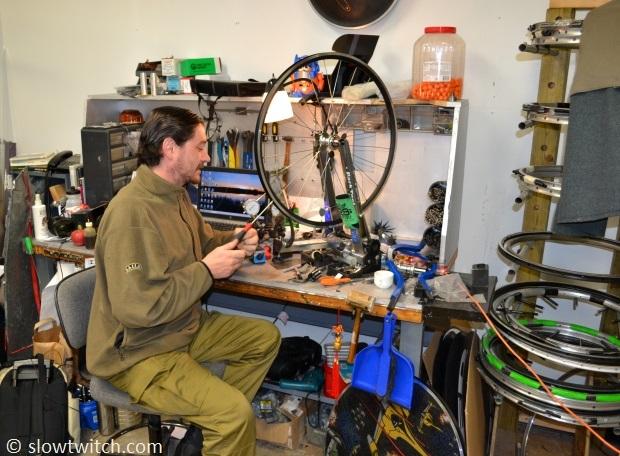
I inquired why Hed chooses to stick with the spoke-wheel style disc with a cover, rather than a full molded disc. They responded that their method is effective, and that a structural disc would offer no inherent aerodynamic advantage – but would most certainly carry a heavy price increase.
Additionally, Hed tells me that their discs are not simply a rim with a cover thrown on; the skin is under tension and contributes to the wheel’s integrity. As a result, small truing adjustments can be made if necessary, but a large change in wheel dish will put too much strain on the disc skin. The unfortunate downside is that older discs cannot be converted to Shimano/SRAM 11-speed, as it would require re-dishing an already-molded wheel (standard Jet, Stinger, H3, and Ardennes wheels can be converted to 11).
Disc skins are made with a wet layup process, which starts life here:
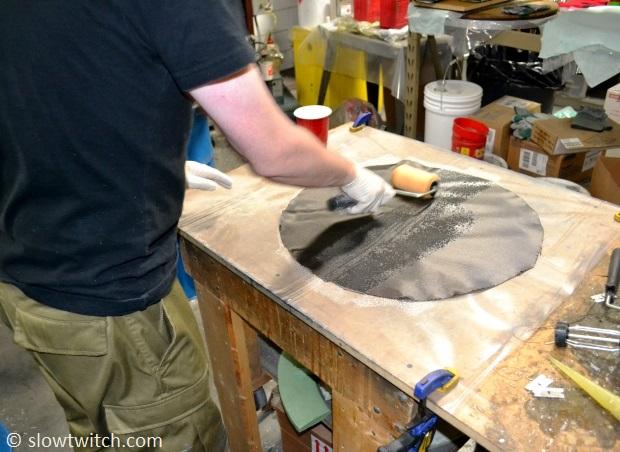
Once finished, discs wait here before finding homes:
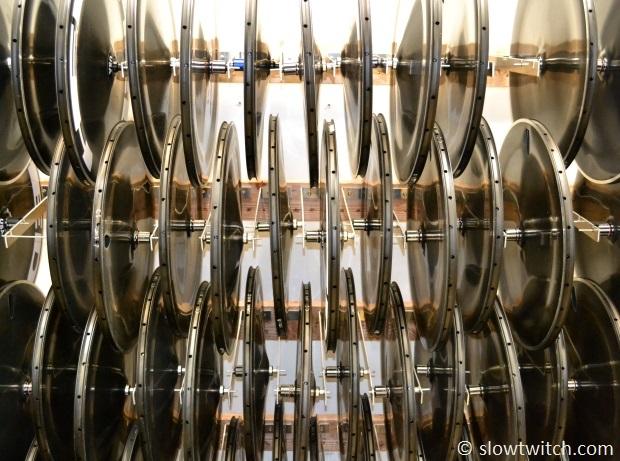
H3s are still a popular wheel, and can be had in many iterations – tubular, clincher, standard depth and ‘deep’, 700c and 650c:
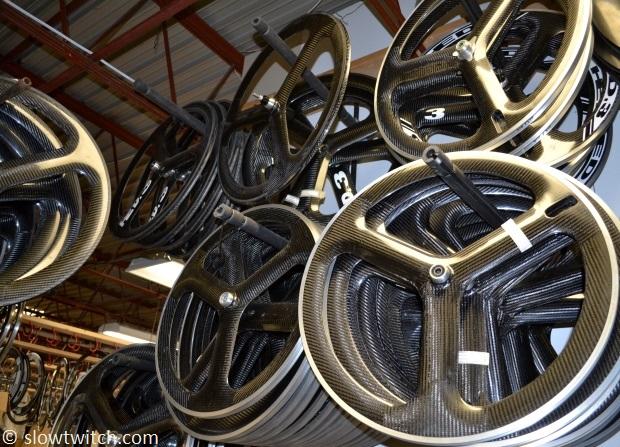
While some have accused Hed of investing zero dollars into a design originally conceived by DuPont, I learned that they have indeed made some changes. Hed completely revamped the hub internals for 2007, and they also developed their own method to more accurately true the wheels before they’re finished, seen here:
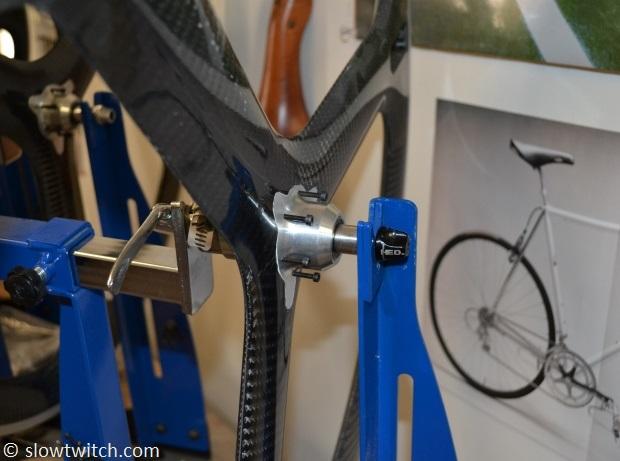
Here are some Jet rims that are molded and waiting for spoke holes:
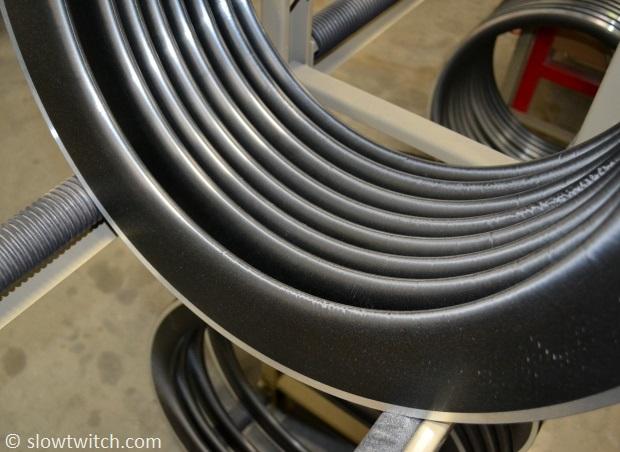
The big news for the Jets in 2014 is that they’ll receive the super-wide rim treatment that the Ardennes got this year (the ‘plus’ option). The Jet 4, 6, 9, and disc will get the new 25mm-wide rim, while the lower-cost Jet 5 and 7 Express will stay with the narrower 23mm rim. 650c product went from 19mm to 23mm in 2013, and will remain at the same width for the foreseeable future.
The deep-rim Jets get custom spokes from Sapim – notice how the blade section comes to an end earlier than you would normally expect:
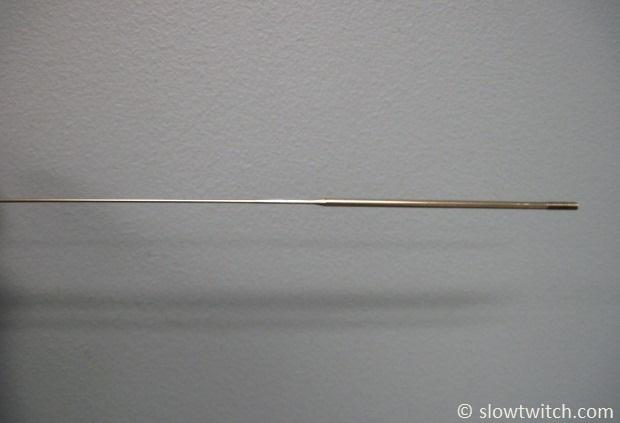
Lots of Ardennes and Ardennes+ rims wait on shelves for assembly…
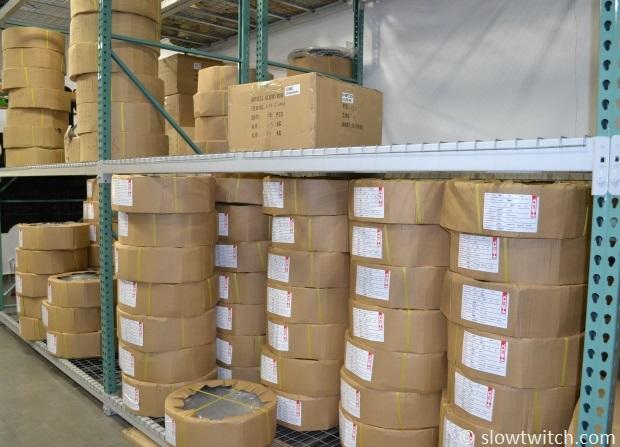
As mentioned above, the bulk of Hed’s aluminum rims come from Taiwan. While visiting the factory, I learned that Hed also does some of their own aluminum rim production, and has plans to expand this with new products.
In fact, I’m told that Steve hand-rolled all of the older aluminum CX rims. He even showed me how it’s done with a segment of extruded aluminum:
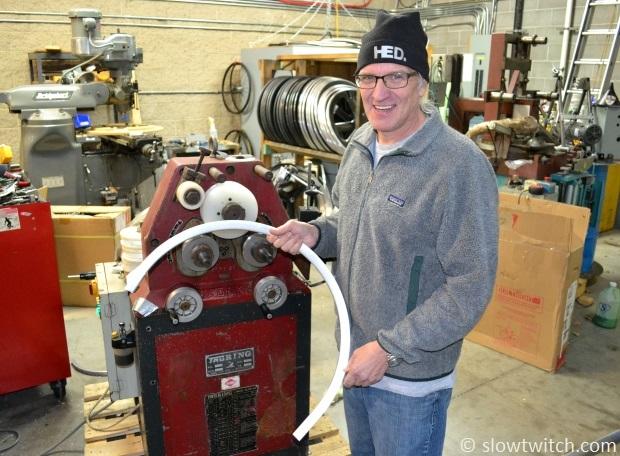
This is quite possibly my favorite part of Hed wheels – the spoke nipples. Hed upgrades all of their wheels to the outstanding DT Pro Lock aluminum nipples. I use them on some of my own custom built wheels, and have found them to be very strong, easy to work with, and very corrosion resistant for an aluminum nipple. The thread locking compound inside also does a great job at holding wheel tension, while still leaving the wheel serviceable. The details count, and these babies aren’t cheap:
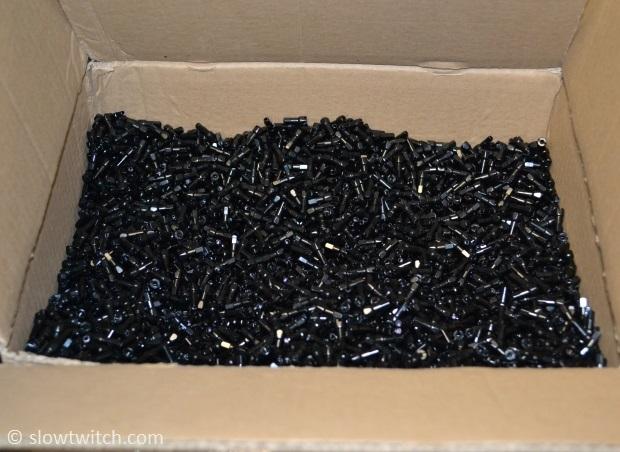
All wheels must meet the ‘smasher’ to settle the spokes in:
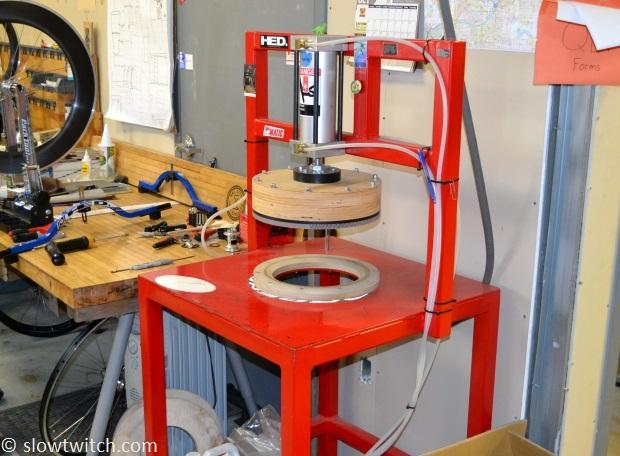
You might have seen that Hed released a carbon clincher wheel at Interbike 2012 (not 2013) called the ‘Vanquish’. At the time, it seemed as though the wheel was ready to go and would start selling right away.
Then there was a delay.
According to Mr. Hedtech himself, Andy Tetmeyer, the rim was finalized and passed all of their heat-related testing – but the tires didn’t. In their tests, they claimed that they couldn’t get aluminum rims to heat over about 250 degrees Fahrenheit, because of how quickly they shed heat with convective cooling. Tetmeyer told me that carbon is a more effective insulator and will retain heat much longer – resulting in rim temperatures climbing well over 400 degrees. Alternating between cool temperatures and extended periods at 450 degrees change the material’s properties and can result in tire and tube degradation.
Interestingly enough, they claim that tire failures didn’t happen during steep descents, but rather at the next stop sign after a descent, when most of the convective cooling has stopped. My personal guess is that this type of failure is most likely in a worst case scenario – heavy rider, big descent, and dragging on the brakes. Hed told us that it’s a risk they aren’t willing to take.
To prove it to me, Hed brought out an aluminum test wheel that had been placed in an oven and repeatedly tested at temperatures they see on the road with carbon clinchers – the yellow residue is burnt on from a clincher tire bead:
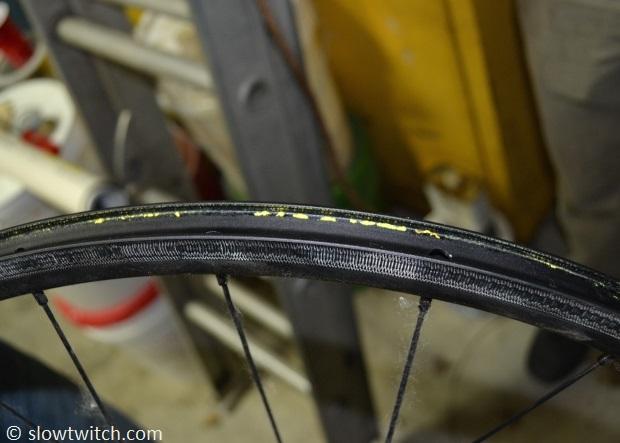
I asked the question – Why aren’t carbon tubulars dangerous, then? Tetmeyer said that the different construction completely changes the game. Tubular tires are insulated by a base tape, and the inner tube is not sitting inside of the rim. The rims still retain more heat than an aluminum rim, but the tire and tube are more isolated from it. As of today, Hed plans to roll out the Vanquish rim as a road disc brake-only product.
I’m not playing judge and jury on the ever-present carbon clincher debate, but this certainly piqued my journalistic interest. No other wheel manufacturers seem to be saying the same thing, at least that I’ve heard. Could blowouts be happening and get blamed on a bum tire – when it is actually due to the carbon rim? Do certain designs or rim laminates retain more heat than others? How many hot/cold cycles does it take to break down a tire and tube? I don’t know, but I can say that this topic surely deserves continued investigation.
The one place that Hed is getting into carbon clinchers right now is in the world of fat bikes:
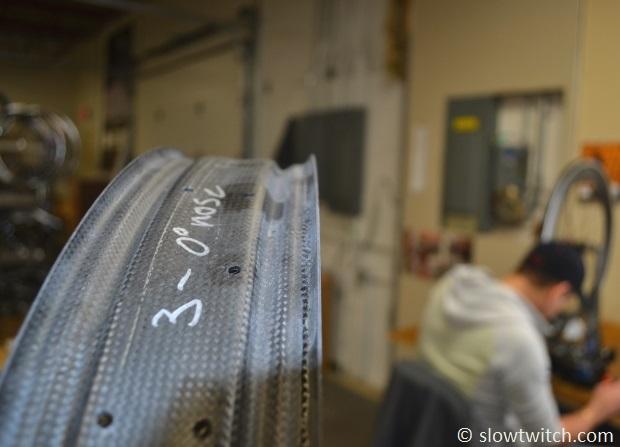
What you see above is the first mass-market carbon ‘fat bike’ rim. Notice that, similar to an automobile wheel, there is no hook to ‘catch’ the tire bead. Due to the tire’s size and pressure, they say that any sort of hook is unnecessary. Initially named the ‘Yo Mama’, the rim weighs an astoundingly light 480 grams. Using these rims, Hed built up a complete fat bike that weighs 22 pounds. Just for fun, I picked up the bike, and it feels like a child’s toy.
They say that the rim is intended as a snow or sand rim, but is not meant for technical or rocky trails that may result in severe rim strikes. As of today, Hed plans to sell the product as a rim only, but is looking into offering complete built wheels.
Regardless of the rim material or size, Hed applies decals that are printed right in their own building:
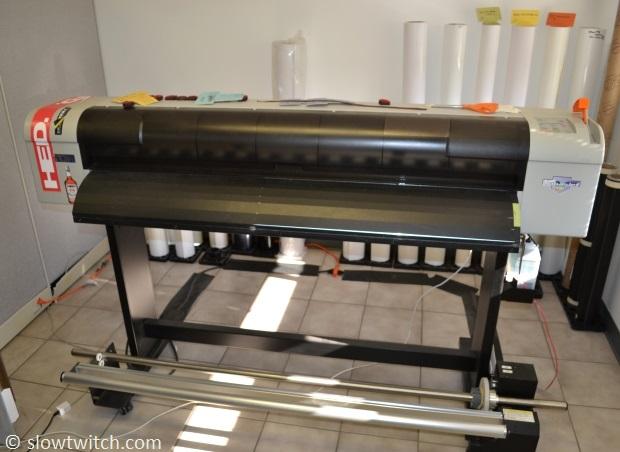
Once wheels are completed for an order, they live for a brief time in the shipping department:
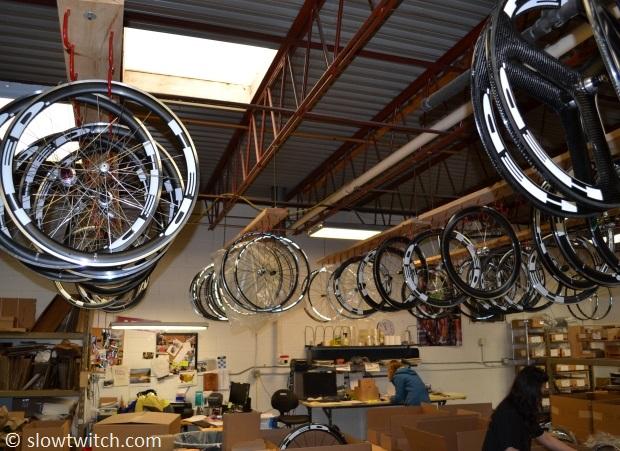
Overall, I had a great time visiting the Hed factory. It is always a treat to get an inside look at how a manufacturer does business. We even got a sneak peek at some yet-to-be-released products, which we’re sure will be of interest to our readers. There is some exciting stuff happening in that quiet Minnesota town…
—
All images © Greg Kopecky / slowtwitch.com



